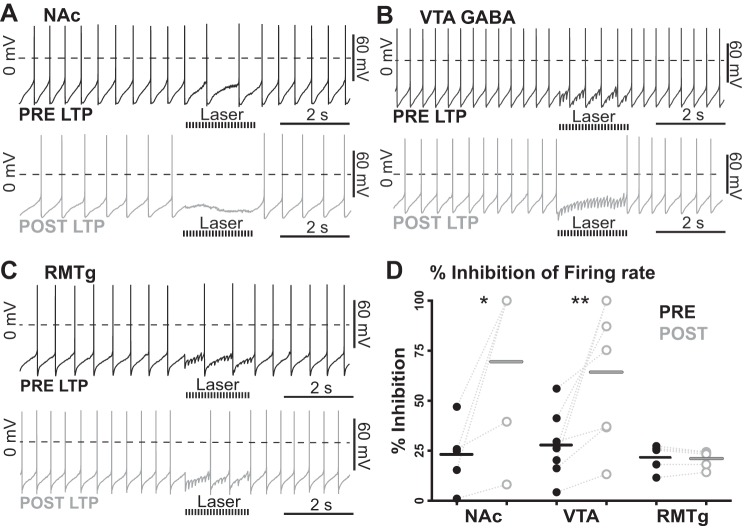Fig. 5.
Cyclic GMP-mediated LTP enhancement of inhibition. A: representative traces of tonic firing inhibition (20-Hz optical stimulation train for 2 s) before (top; pre LTP) and after (bottom; post LTP) LTP induction at NAc afferents by bath application of the cyclic GMP analog 8-pCPT-cGMP (100 µM). B: representative traces of tonic firing inhibition (20-Hz optical stimulation train for 2 s) before (top; pre LTP) and after (bottom; post LTP) LTP induction at GABA neurons within the VTA that project to VTA dopamine neurons by bath application of the cyclic GMP analog 8-pCPT-cGMP (100 µM). C: representative traces of tonic firing inhibition (20-Hz optical stimulation train for 2 s) before (top; pre LTP) and after (bottom; post LTP) LTP induction at RMTg afferents by bath application of the cyclic GMP analog 8-pCPT-cGMP (100 µM). D: summary of input-specific inhibition. After LTP induction at NAc inputs, optically induced inhibition of firing was potentiated (n = 6 cells, *P = 0.014). From VTA GABA inputs, inhibition of firing rate was also facilitated (n = 7 cells, **P = 0.004). However, no change in inhibition was observed from RMTg-specific inputs following bath application of the cyclic GMP analog 8-pCPT-cGMP (n = 5 cells, P = 0.845). Data are medians with each data point plotted.

